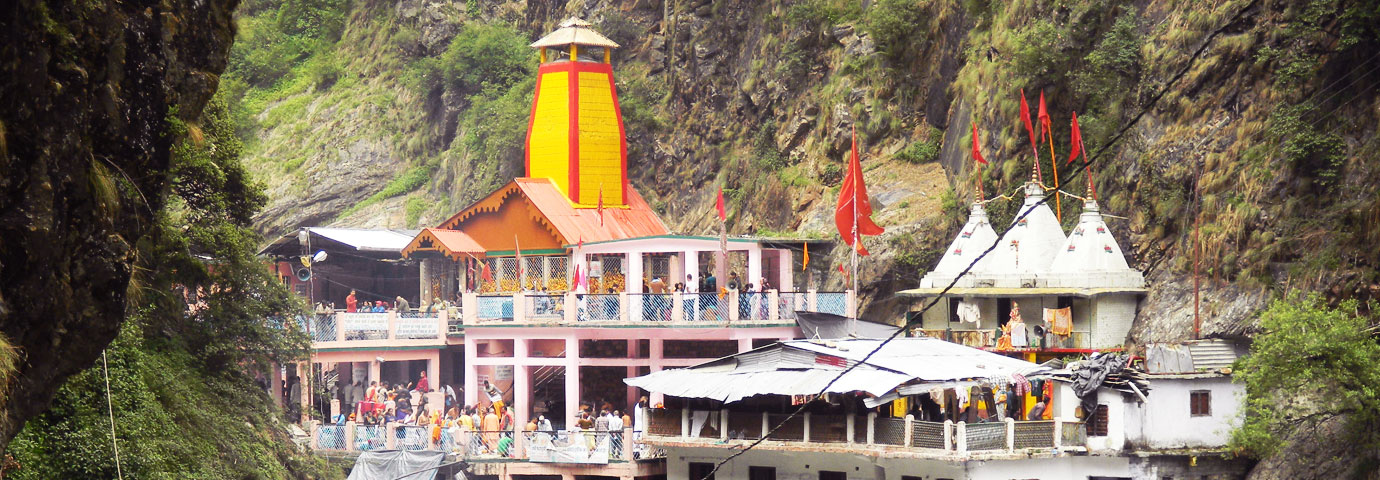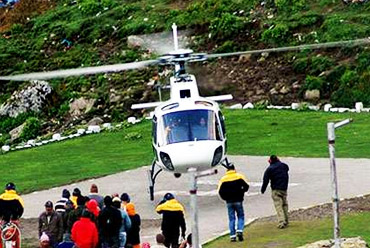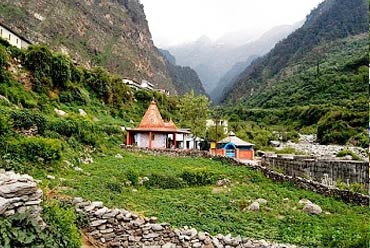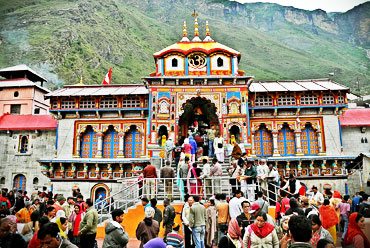The Garhwal Himalayas are blessed with the holiest Hindu pilgrimage sites, and Yamunotri is one of them. According to Hindu mythology, Yamunotri is the origin of the sacred Yamuna River but Saptarishi Kund, 10 km from the temple, is the original source of the Yamuna River. Famous for its thermal springs and glaciers, the temple is among the important stopovers on the itinerary of the Hindu pilgrim. According to an old legend, Asit Muni, the revered sage, used to reside here.
We have prepared a Yamunotri Dham travel guide to help travelers plan more efficiently
Location
Perched at 3293 meters above sea level, Yamunotri is located in the Uttarkashi district of the northern state of Uttarakhand. It is very close to the Indo-Chinese border and is surrounded by the Himalayan offshoots on all sides. Yamunotri lies near the Bandarpunch Mountain, which is 6315 meters high and lies to the north.
Best Time To Visit Yamunotri Dham
The best time to visit Yamunotri is from May to June and September to November. During this time, the weather is cool, perfect for sightseeing and temple visits. Summers are cool while winters are snow-bound with temperatures falling below 0°C. One is advised to carry light or heavy woolens depending on the time of visit.
Tourists Attractions in Yamunotri
There are many places in Yamunotri that tourists and pilgrims can visit. However, Yamunotri Temple is a major attraction. According to legend, Yamuna is the daughter of Surya, the Sun God, and Sangya, the Goddess of consciousness. The Yamuna is also the sister of Yama, the God of death, so anyone bathing in the river's waters is spared a painful death. Here’s a list of places to visit in Yamunotri during your visit -
-
Yamunotri Temple - Built by Maharani Gularia of Jaipur in the 19th century, this temple was destroyed twice in 1923 and 1982 but was subsequently rebuilt. Located about 6 km below the glacier, it is dedicated to Goddess Yamuna, represented in the form of a silver idol, bedecked with garlands.
-
Hot Water Pool - This pool is used to prepare the prasad or holy offerings to the deity, normally rice and potatoes, cooked by dipping into the hot water tied in cloth bags.
-
Surya Kund - It is known for its thermal springs. The temperature here is as high as 190°F.
-
Divya Shilla is a rock pillar that the pilgrims worship before entering the Yamunotri temple.
Places Around Yamunotri Temple
After darshan at Yamunotri Temple, you can explore the nearby areas. Here’s a list of places near Yamunotri you can add to your itinerary accordingly -
-
Janki Chatti - At a distance of 5 km from Yamunotri, Janki Chatti is well-known for its thermal springs. It provides accommodation facilities for tourists as well.
-
Kharsali - From Janki Chatti, one can reach Kharsali, 1 km away, the last village in the region. It has a three-storied Shiva temple with carved stones on the walls. The intricate woodwork here is also noteworthy.
-
Saptarishi Kund - It is around 7 km from Yamunotri Temple and is the actual source of the river. This lake is generally covered with ice. The place is known for the rare Brahma lotus, which grows here.
-
Badkot - A small hamlet, 49 km from Yamunotri. It has an ancient temple and can provide good facilities to the traveler.
-
Hanuman Chatti - It is located at the confluence of the Hanuman Ganga and Yamuna rivers, and the trekking route to Dodi Tal starts here. Accommodation is available here as well.
How To Reach Yamunotri Temple
By Flight- The nearest airport to Yamunotri is in Dehradun. Take a flight to Jolly Grant airport from Delhi or a major Indian city. From there, we will provide you with a private vehicle till Yamunotri.
By Road - There is no straight route to Yamunotri. However, one can reach Hanuman Chatti by bus from Rishikesh, Mussoorie, Uttarkashi, Gangotri, Badkot, Haridwar, and Dehradun. Then, you can either trek for 14 km or use ponies and palanquins, available on hire.
By Rail - The nearest railheads are at Rishikesh, 200 km via Narendranagar and Haridwar. We would provide you with all India tourist permit vehicles for the local transportations and intercity drives.





